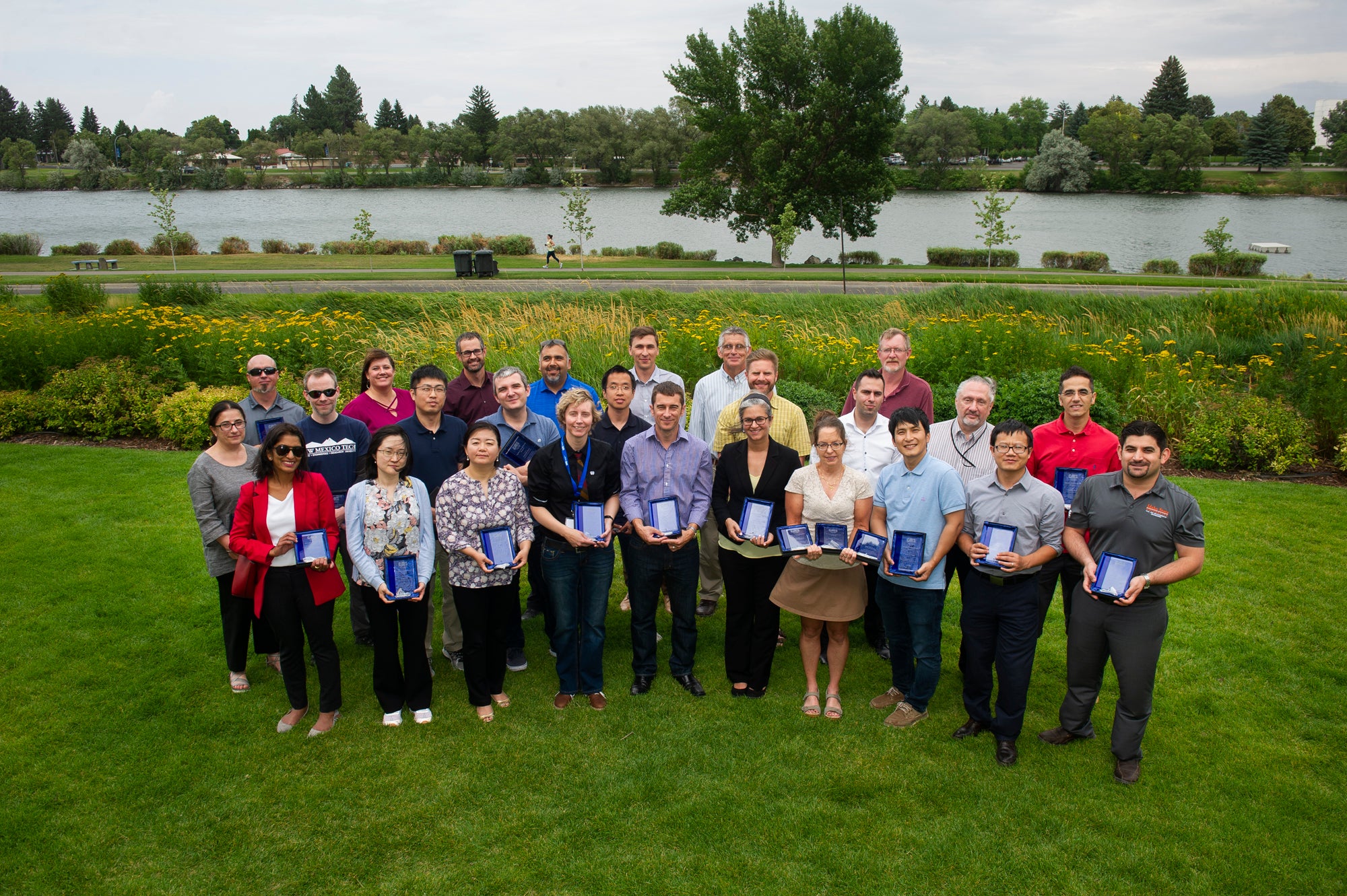
Zhangxian “Dan” Deng, an assistant professor in the Department of Mechanical and Biomedical Engineering at Boise State University, has been awarded a grant from the U.S. Department of Energy’s Nuclear Energy University Program (NEUP). This prestigious grant supports his project titled “Magnetostrictive Guided-Wave Transducers for Nuclear Reactor Piping System Monitoring.” The research team includes collaborators Joshua Daw and Bibo Zhong from Idaho National Laboratory, and Susan White from The Ohio State University. Deng said:
I am deeply grateful for the support from the Center for Advanced Energy Studies (CAES), which has been instrumental in forming our interdisciplinary team across Boise State, the Ohio State, and Idaho National Laboratory—a direct result of the CAES collaboration fund.Zhangxian “Dan” Deng
Deng’s project addresses significant challenges faced by the nuclear energy sector, particularly the high maintenance costs of nuclear power plants, which are 3-4 times higher than those of coal or natural gas plants.
The piping systems in nuclear reactors are especially vulnerable to wear and degradation from environmental stressors, necessitating timely maintenance to ensure safety and efficiency.
Traditional structural health monitoring (SHM) systems, which utilize electromagnetic or piezoceramic ultrasonic transducers (UTs), suffer from low signal-to-noise ratios, complex installation procedures, and performance issues under harsh conditions.
To overcome these obstacles, Deng’s project focuses on developing a groundbreaking SHM system using magnetostrictive iron-gallium alloys (Galfenol). These alloys deform in a magnetic field and exhibit magnetization variations when subjected to mechanical stress, making them ideal for innovative UTs due to their high-temperature and radiation resistance, mechanical durability, and energy conversion efficiency comparable to piezoceramics.
The project has three core objectives:
- Simplify Sensor Integration: By directly printing Galfenol onto stainless steel host structures, the team aims to create innovative Galfenol nanomaterial inks and optimize printing and post-processing techniques. This approach will deepen the understanding of the process-structure-property relationship in printed Galfenol, accelerating its adoption in nuclear applications.
- Develop a Comprehensive SHM System: This includes printed Galfenol UTs, wired data transmission circuits, and a user-friendly graphical user interface. Using multiphysics finite element modeling and laser vibrometry, the team aims to deliver computer-aided design tools and advanced signal processing techniques for Galfenol SHM systems.
- Validate the System in Extreme Conditions: The system will be tested at the research reactor at The Ohio State University, simulating conditions equivalent to 70 years of operation in commercial light water reactors. This validation will provide new insights into how extreme environments impact Galfenol properties, the strength of the Galfenol-substrate interface, and the overall performance of Galfenol UTs.
Successful completion of this project is expected to enhance damage prognosis capabilities, reduce operational costs, and improve safety in existing light water reactors.
The innovative technology developed through this research also holds potential for application in various structures, such as heat exchangers and reactor pressure vessels, and is adaptable to a wide range of advanced reactor designs, including sodium or salt-cooled reactors and high-temperature gas reactors. Deng said:
My team is thrilled to begin this pioneering project, which promises to revolutionize structural health monitoring in nuclear reactors.Zhangxian “Dan” Deng
Deng’s connection with the Center for Advanced Energy Studies (CAES) began with a road trip in 2018, led by Dr. Dave Estrada, where he met Dr. Joshua Daw from Idaho National Laboratory, who later became the Co-PI on his DOE CINR proposal. Deng credits his ongoing collaboration with INL and his participation in the Advanced Sensors and Instrumentations program to this initial introduction.
The support from CAES, including participation in their Summer Visiting Faculty programs and the CO*STAR training, has been pivotal in Deng’s career development. These experiences reshaped how he approaches and articulates his research, significantly enhancing his proposals and presentations.

Deng acknowledges the extensive support and professional development offered by CAES as instrumental in securing the DOE CINR award. The training and collaborations fostered through CAES have not only refined his research capabilities but also positioned him to successfully compete for significant funding opportunities. Deng is immensely grateful for the role CAES has played in his career, attributing a significant part of his success to the guidance and opportunities provided by CAES. He said:
We are eager to leverage our interdisciplinary expertise to tackle the challenges ahead and deliver impactful results that can ensure the safe and cost-efficient operation of next-generation nuclear power plants.Zhangxian “Dan” Deng